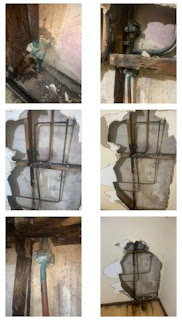Here's a Step-By-Step Guide on How to Change Tap Washers
If you're experiencing a dripping tap or a leak, chances are it's because of a worn or damaged washer. Fortunately, changing a tap washer is a relatively simple task that can be accomplished with just a few basic tools. Here's a step-by-step guide on how to change tap washers. Otherwise give Campbell Plumbing & Maintenance a call on 8410 9000 or book online.
 |
| Campbell Plumbing & Maintenance for all your Tap Seats & Washer repairs across Adelaide. |
- Turn off the water supply: Before starting any plumbing work, it's important to turn off the water supply to the tap you're working on. You can usually do this by turning off the isolation valve located underneath the sink.
- Remove the tap handle: The tap handle is usually held in place by a screw that can be found at the base of the handle. Once the screw is removed, you should be able to lift off the handle to reveal the tap's inner workings.
- Unscrew the tap bonnet: The tap bonnet is the metal ring that surrounds the tap valve. You'll need to use a wrench to unscrew it in order to access the washer.
- Remove the old washer: The washer is located at the base of the tap valve. To remove it, simply pull it out using a pair of pliers. If the washer is particularly stubborn, you may need to use a flat-head screwdriver to prise it out.
- Replace the washer: Once the old washer has been removed, you can insert the new one in its place. Make sure the new washer is the same size and shape as the old one to ensure a tight fit.
- Reassemble the tap: Once the new washer is in place, you can reassemble the tap by screwing the bonnet back onto the valve and replacing the tap handle.
- Turn the water supply back on: With the tap reassembled, you can turn the water supply back on and test the tap for leaks. If there are no leaks, your job is done!
In summary, changing a tap washer is a simple DIY task that
can be completed with just a few basic tools. With this guide, you should be
able to fix a dripping tap in no time, saving you money on expensive plumbing
repairs. However, if you encounter any issues or are unsure about how to
proceed,








I've always hesitated when it comes to fixing leaks, but the detailed steps here make it seem totally doable. What caught my attention was the emphasis on routine plumbing maintenance services. It’s something I’ve overlooked in the past, and now I see how it could’ve saved me a lot of hassle. The clear instructions and practical tips make this a go-to resource for anyone looking to tackle plumbing issues on their own.
ReplyDelete